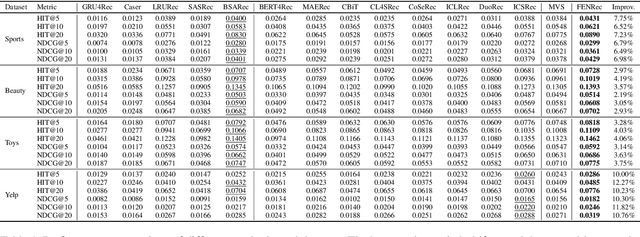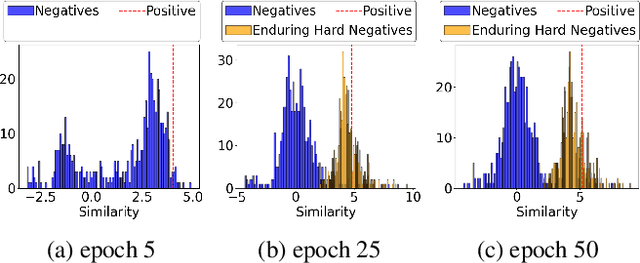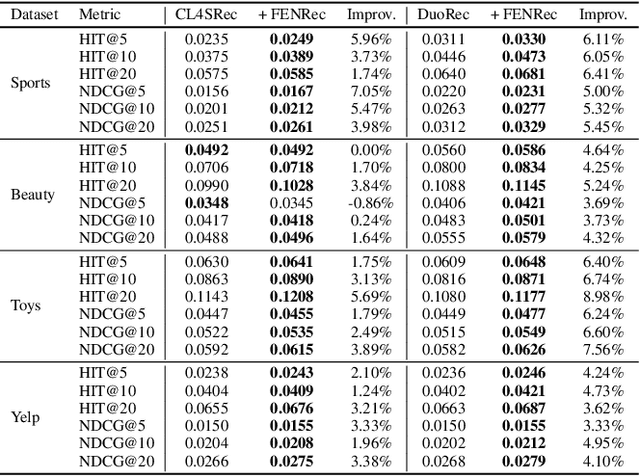Wen-Huang Cheng
National Yang Ming Chiao Tung University
InstructFLIP: Exploring Unified Vision-Language Model for Face Anti-spoofing
Jul 16, 2025Abstract:Face anti-spoofing (FAS) aims to construct a robust system that can withstand diverse attacks. While recent efforts have concentrated mainly on cross-domain generalization, two significant challenges persist: limited semantic understanding of attack types and training redundancy across domains. We address the first by integrating vision-language models (VLMs) to enhance the perception of visual input. For the second challenge, we employ a meta-domain strategy to learn a unified model that generalizes well across multiple domains. Our proposed InstructFLIP is a novel instruction-tuned framework that leverages VLMs to enhance generalization via textual guidance trained solely on a single domain. At its core, InstructFLIP explicitly decouples instructions into content and style components, where content-based instructions focus on the essential semantics of spoofing, and style-based instructions consider variations related to the environment and camera characteristics. Extensive experiments demonstrate the effectiveness of InstructFLIP by outperforming SOTA models in accuracy and substantially reducing training redundancy across diverse domains in FAS. Project website is available at https://kunkunlin1221.github.io/InstructFLIP.
MEGC2025: Micro-Expression Grand Challenge on Spot Then Recognize and Visual Question Answering
Jun 18, 2025Abstract:Facial micro-expressions (MEs) are involuntary movements of the face that occur spontaneously when a person experiences an emotion but attempts to suppress or repress the facial expression, typically found in a high-stakes environment. In recent years, substantial advancements have been made in the areas of ME recognition, spotting, and generation. However, conventional approaches that treat spotting and recognition as separate tasks are suboptimal, particularly for analyzing long-duration videos in realistic settings. Concurrently, the emergence of multimodal large language models (MLLMs) and large vision-language models (LVLMs) offers promising new avenues for enhancing ME analysis through their powerful multimodal reasoning capabilities. The ME grand challenge (MEGC) 2025 introduces two tasks that reflect these evolving research directions: (1) ME spot-then-recognize (ME-STR), which integrates ME spotting and subsequent recognition in a unified sequential pipeline; and (2) ME visual question answering (ME-VQA), which explores ME understanding through visual question answering, leveraging MLLMs or LVLMs to address diverse question types related to MEs. All participating algorithms are required to run on this test set and submit their results on a leaderboard. More details are available at https://megc2025.github.io.
RecipeGen: A Step-Aligned Multimodal Benchmark for Real-World Recipe Generation
Jun 07, 2025Abstract:Creating recipe images is a key challenge in food computing, with applications in culinary education and multimodal recipe assistants. However, existing datasets lack fine-grained alignment between recipe goals, step-wise instructions, and visual content. We present RecipeGen, the first large-scale, real-world benchmark for recipe-based Text-to-Image (T2I), Image-to-Video (I2V), and Text-to-Video (T2V) generation. RecipeGen contains 26,453 recipes, 196,724 images, and 4,491 videos, covering diverse ingredients, cooking procedures, styles, and dish types. We further propose domain-specific evaluation metrics to assess ingredient fidelity and interaction modeling, benchmark representative T2I, I2V, and T2V models, and provide insights for future recipe generation models. Project page is available now.
Swapped Logit Distillation via Bi-level Teacher Alignment
Apr 27, 2025Abstract:Knowledge distillation (KD) compresses the network capacity by transferring knowledge from a large (teacher) network to a smaller one (student). It has been mainstream that the teacher directly transfers knowledge to the student with its original distribution, which can possibly lead to incorrect predictions. In this article, we propose a logit-based distillation via swapped logit processing, namely Swapped Logit Distillation (SLD). SLD is proposed under two assumptions: (1) the wrong prediction occurs when the prediction label confidence is not the maximum; (2) the "natural" limit of probability remains uncertain as the best value addition to the target cannot be determined. To address these issues, we propose a swapped logit processing scheme. Through this approach, we find that the swap method can be effectively extended to teacher and student outputs, transforming into two teachers. We further introduce loss scheduling to boost the performance of two teachers' alignment. Extensive experiments on image classification tasks demonstrate that SLD consistently performs best among previous state-of-the-art methods.
Single Document Image Highlight Removal via A Large-Scale Real-World Dataset and A Location-Aware Network
Apr 19, 2025Abstract:Reflective documents often suffer from specular highlights under ambient lighting, severely hindering text readability and degrading overall visual quality. Although recent deep learning methods show promise in highlight removal, they remain suboptimal for document images, primarily due to the lack of dedicated datasets and tailored architectural designs. To tackle these challenges, we present DocHR14K, a large-scale real-world dataset comprising 14,902 high-resolution image pairs across six document categories and various lighting conditions. To the best of our knowledge, this is the first high-resolution dataset for document highlight removal that captures a wide range of real-world lighting conditions. Additionally, motivated by the observation that the residual map between highlighted and clean images naturally reveals the spatial structure of highlight regions, we propose a simple yet effective Highlight Location Prior (HLP) to estimate highlight masks without human annotations. Building on this prior, we present the Location-Aware Laplacian Pyramid Highlight Removal Network (L2HRNet), which effectively removes highlights by leveraging estimated priors and incorporates diffusion module to restore details. Extensive experiments demonstrate that DocHR14K improves highlight removal under diverse lighting conditions. Our L2HRNet achieves state-of-the-art performance across three benchmark datasets, including a 5.01\% increase in PSNR and a 13.17\% reduction in RMSE on DocHR14K.
Foreground Focus: Enhancing Coherence and Fidelity in Camouflaged Image Generation
Apr 02, 2025Abstract:Camouflaged image generation is emerging as a solution to data scarcity in camouflaged vision perception, offering a cost-effective alternative to data collection and labeling. Recently, the state-of-the-art approach successfully generates camouflaged images using only foreground objects. However, it faces two critical weaknesses: 1) the background knowledge does not integrate effectively with foreground features, resulting in a lack of foreground-background coherence (e.g., color discrepancy); 2) the generation process does not prioritize the fidelity of foreground objects, which leads to distortion, particularly for small objects. To address these issues, we propose a Foreground-Aware Camouflaged Image Generation (FACIG) model. Specifically, we introduce a Foreground-Aware Feature Integration Module (FAFIM) to strengthen the integration between foreground features and background knowledge. In addition, a Foreground-Aware Denoising Loss is designed to enhance foreground reconstruction supervision. Experiments on various datasets show our method outperforms previous methods in overall camouflaged image quality and foreground fidelity.
RecipeGen: A Benchmark for Real-World Recipe Image Generation
Mar 07, 2025



Abstract:Recipe image generation is an important challenge in food computing, with applications from culinary education to interactive recipe platforms. However, there is currently no real-world dataset that comprehensively connects recipe goals, sequential steps, and corresponding images. To address this, we introduce RecipeGen, the first real-world goal-step-image benchmark for recipe generation, featuring diverse ingredients, varied recipe steps, multiple cooking styles, and a broad collection of food categories. Data is in https://github.com/zhangdaxia22/RecipeGen.
Feature-based One-For-All: A Universal Framework for Heterogeneous Knowledge Distillation
Jan 15, 2025Abstract:Knowledge distillation (KD) involves transferring knowledge from a pre-trained heavy teacher model to a lighter student model, thereby reducing the inference cost while maintaining comparable effectiveness. Prior KD techniques typically assume homogeneity between the teacher and student models. However, as technology advances, a wide variety of architectures have emerged, ranging from initial Convolutional Neural Networks (CNNs) to Vision Transformers (ViTs), and Multi-Level Perceptrons (MLPs). Consequently, developing a universal KD framework compatible with any architecture has become an important research topic. In this paper, we introduce a feature-based one-for-all (FOFA) KD framework to enable feature distillation across diverse architecture. Our framework comprises two key components. First, we design prompt tuning blocks that incorporate student feedback, allowing teacher features to adapt to the student model's learning process. Second, we propose region-aware attention to mitigate the view mismatch problem between heterogeneous architecture. By leveraging these two modules, effective distillation of intermediate features can be achieved across heterogeneous architectures. Extensive experiments on CIFAR, ImageNet, and COCO demonstrate the superiority of the proposed method.
Future Sight and Tough Fights: Revolutionizing Sequential Recommendation with FENRec
Dec 16, 2024



Abstract:Sequential recommendation (SR) systems predict user preferences by analyzing time-ordered interaction sequences. A common challenge for SR is data sparsity, as users typically interact with only a limited number of items. While contrastive learning has been employed in previous approaches to address the challenges, these methods often adopt binary labels, missing finer patterns and overlooking detailed information in subsequent behaviors of users. Additionally, they rely on random sampling to select negatives in contrastive learning, which may not yield sufficiently hard negatives during later training stages. In this paper, we propose Future data utilization with Enduring Negatives for contrastive learning in sequential Recommendation (FENRec). Our approach aims to leverage future data with time-dependent soft labels and generate enduring hard negatives from existing data, thereby enhancing the effectiveness in tackling data sparsity. Experiment results demonstrate our state-of-the-art performance across four benchmark datasets, with an average improvement of 6.16\% across all metrics.
Personalized Lip Reading: Adapting to Your Unique Lip Movements with Vision and Language
Sep 02, 2024Abstract:Lip reading aims to predict spoken language by analyzing lip movements. Despite advancements in lip reading technologies, performance degrades when models are applied to unseen speakers due to their sensitivity to variations in visual information such as lip appearances. To address this challenge, speaker adaptive lip reading technologies have advanced by focusing on effectively adapting a lip reading model to target speakers in the visual modality. The effectiveness of adapting language information, such as vocabulary choice, of the target speaker has not been explored in the previous works. Moreover, existing datasets for speaker adaptation have limited vocabulary size and pose variations, limiting the validation of previous speaker-adaptive methods in real-world scenarios. To address these issues, we propose a novel speaker-adaptive lip reading method that adapts a pre-trained model to target speakers at both vision and language levels. Specifically, we integrate prompt tuning and the LoRA approach, applying them to a pre-trained lip reading model to effectively adapt the model to target speakers. In addition, to validate its effectiveness in real-world scenarios, we introduce a new dataset, VoxLRS-SA, derived from VoxCeleb2 and LRS3. It contains a vocabulary of approximately 100K words, offers diverse pose variations, and enables the validation of adaptation methods in wild, sentence-level lip reading for the first time. Through various experiments, we demonstrate that the existing speaker-adaptive method also improves performance in the wild at the sentence level. Moreover, with the proposed adaptation method, we show that the proposed method achieves larger improvements when applied to the target speaker, compared to the previous works.
 Add to Chrome
Add to Chrome Add to Firefox
Add to Firefox Add to Edge
Add to Edge